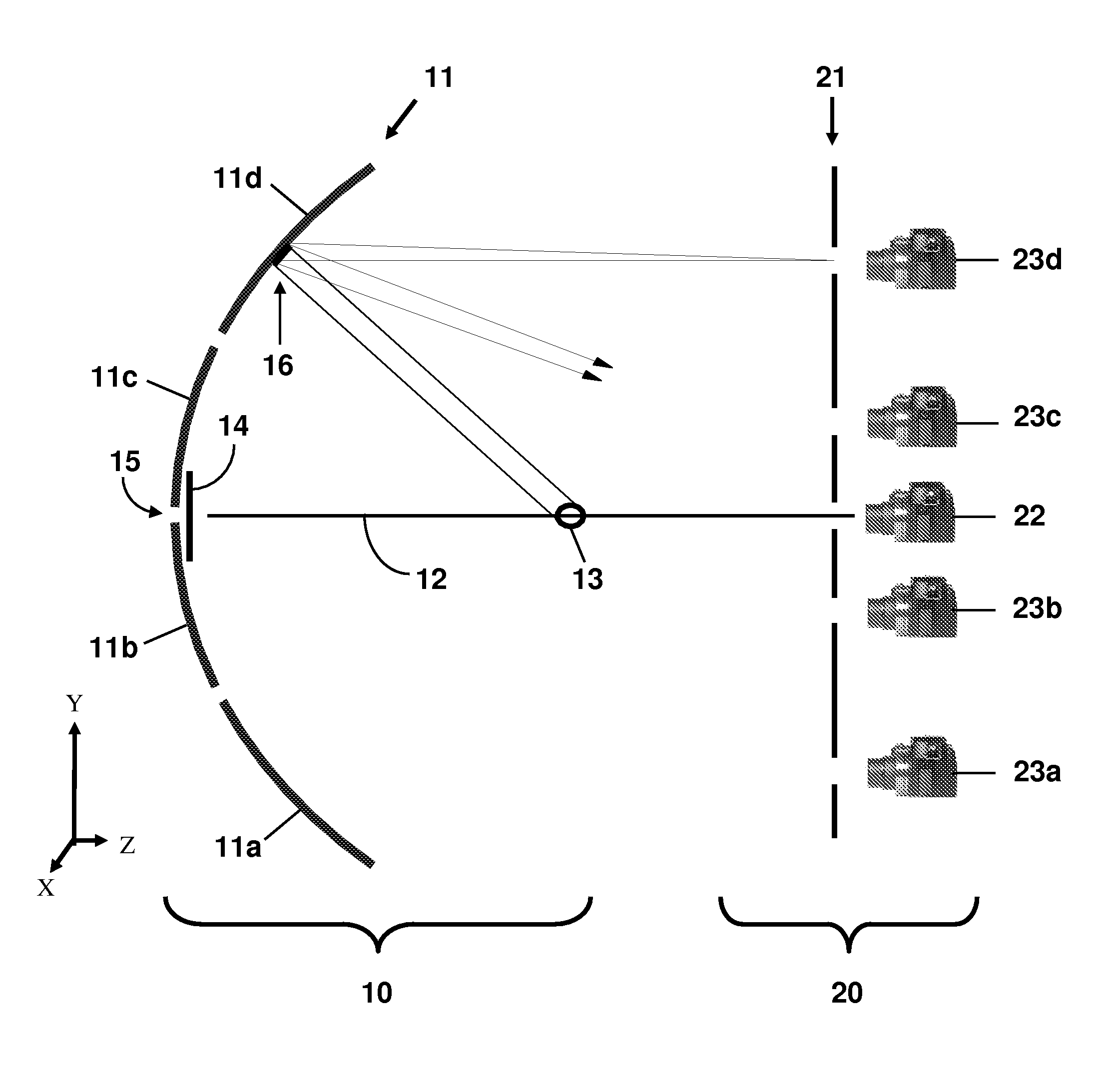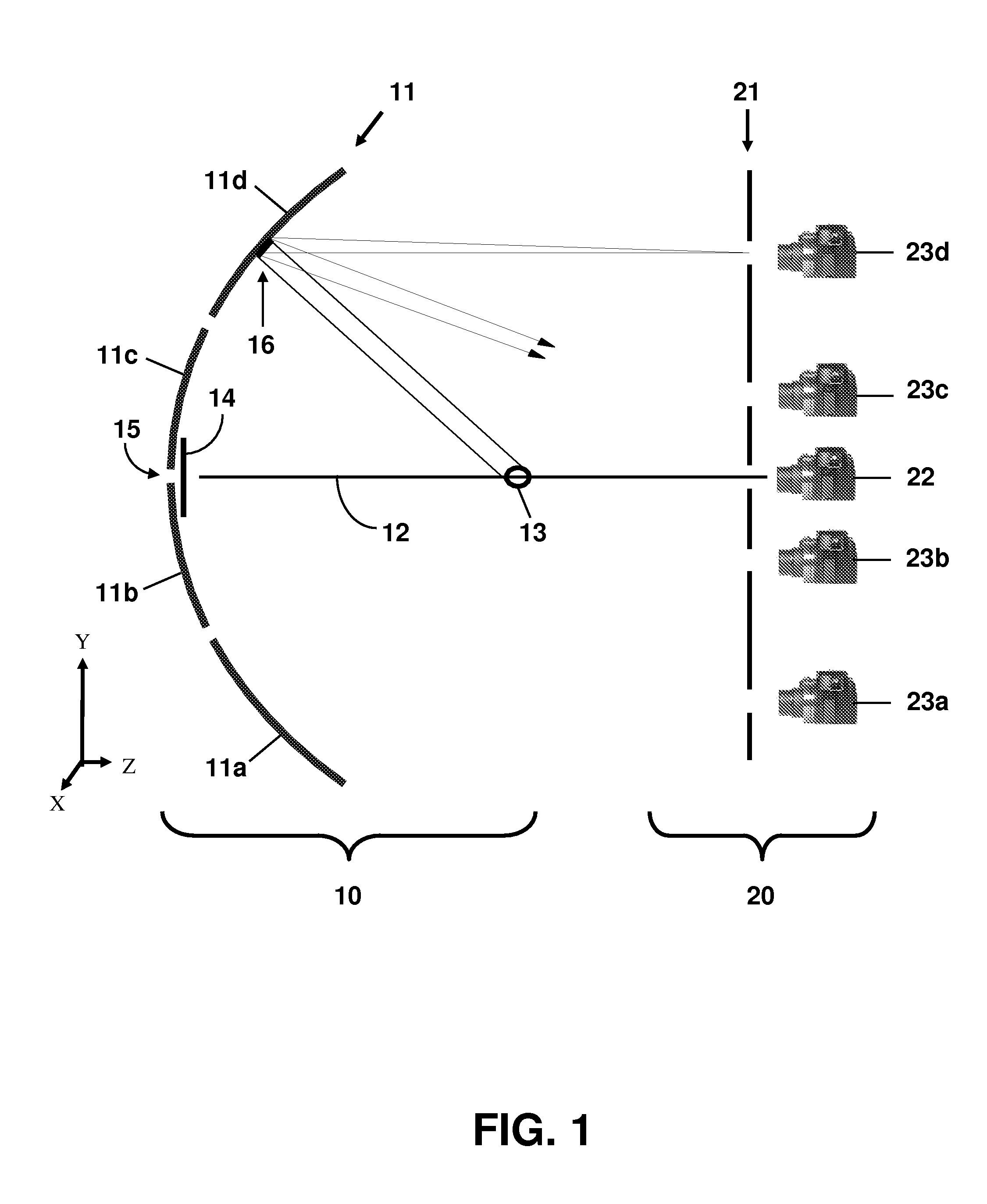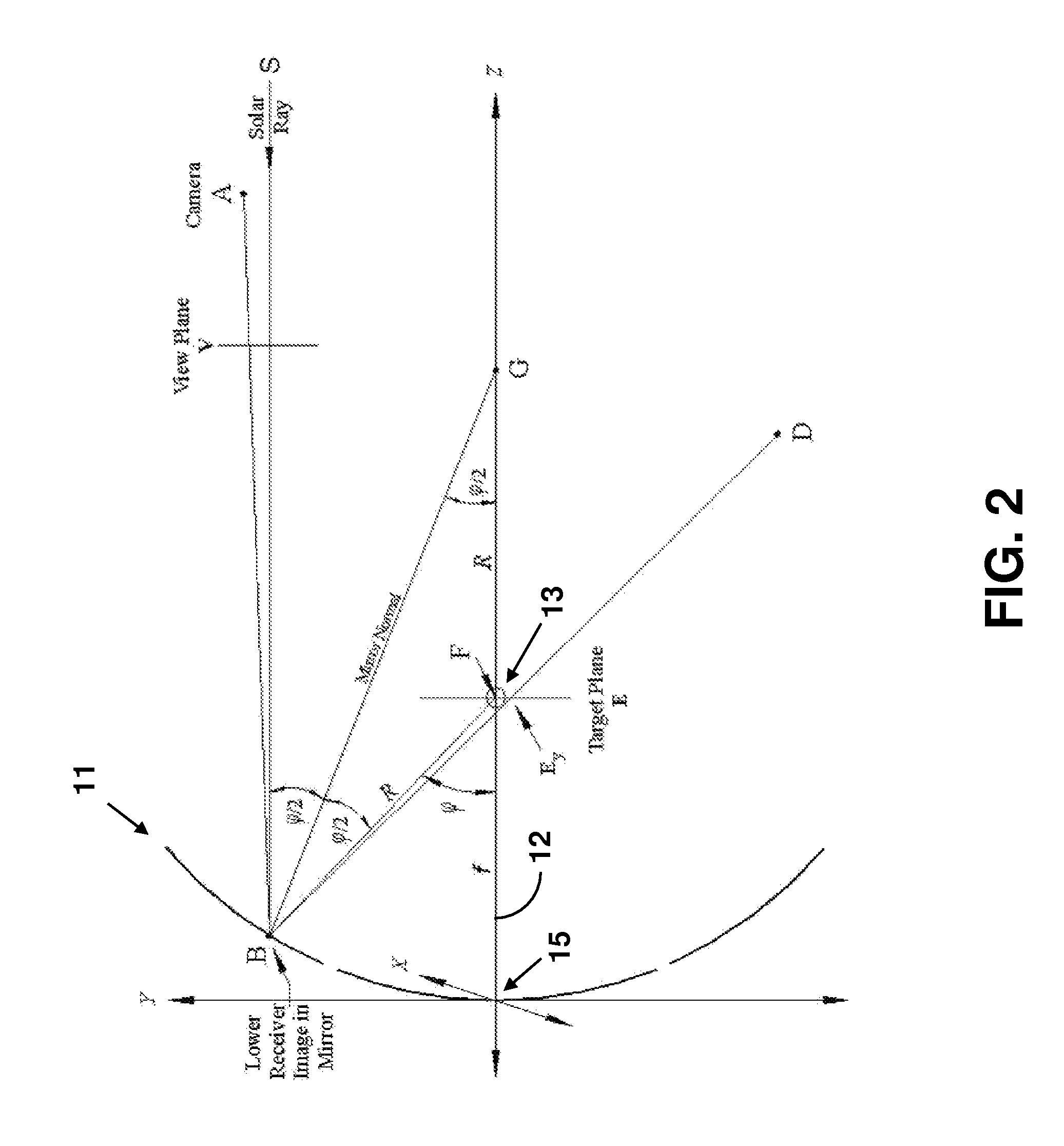Alignment method for parabolic trough solar concentrators
a technology of parabolic trough and solar concentrator, which is applied in the field of solar collectors, can solve the problems of inability to develop practical optical alignment techniques for accurate alignment of parabolic trough concentrators, preventing maximum energy efficiency, and lack of accuracy, so as to reduce spillage losses, enable the best possible optical performance, and align the effect of accuracy
- Summary
- Abstract
- Description
- Claims
- Application Information
AI Technical Summary
Benefits of technology
Problems solved by technology
Method used
Image
Examples
Embodiment Construction
[0021]In FIG. 1 is shown a side-view schematic illustration of a parabolic collector 10 that illustrates the basic principles of the TOP alignment method of the present invention. The collector 10 comprises a line-focusing parabolic trough concentrator 11 and a linear receiver, or HCE 13. The parabolic axis 12 lies in the z direction, through the vertex 15 of the trough concentrator 11. Elevation is in the vertical y direction. The trough of the concentrator 11 and the length of the HCE 13 run in the horizontal x direction, out of the plane of the figure. The trough concentrator 11 comprises at least two rows of mirror facets.
[0022]Each row comprises one or more mirror facets that are arranged serially in the x direction. For example, four rows 11a-d of mirror facets are shown in FIG. 1. Adjacent mirror facets in adjacent rows can be arranged in columns. The rows and columns of mirror facets form a concentrator module 11. Light from a source (e.g., the sun) is reflected by the rows ...
PUM
 Login to View More
Login to View More Abstract
Description
Claims
Application Information
 Login to View More
Login to View More - R&D
- Intellectual Property
- Life Sciences
- Materials
- Tech Scout
- Unparalleled Data Quality
- Higher Quality Content
- 60% Fewer Hallucinations
Browse by: Latest US Patents, China's latest patents, Technical Efficacy Thesaurus, Application Domain, Technology Topic, Popular Technical Reports.
© 2025 PatSnap. All rights reserved.Legal|Privacy policy|Modern Slavery Act Transparency Statement|Sitemap|About US| Contact US: help@patsnap.com



